Simply stated, Chris Powell puts objects together to form relationships that the viewer unravels.
Powell’s complex installation relies heavily on his personal collection of found objects and intimate drawings juxtaposed with small scale ceramic sculptures ranging from animals to utilitarian forms positioned atop tile setters from a defunct tile manufacturer in Mineral Wells, Texas. Powell utilizes one gallery—formerly an isolation cell—to be more contemplative, exploring the ongoing theme the artist refers to as "crane and turtle"—referencing a Japanese landscaping principle that places a tall stone in relationship to a short flat stone.
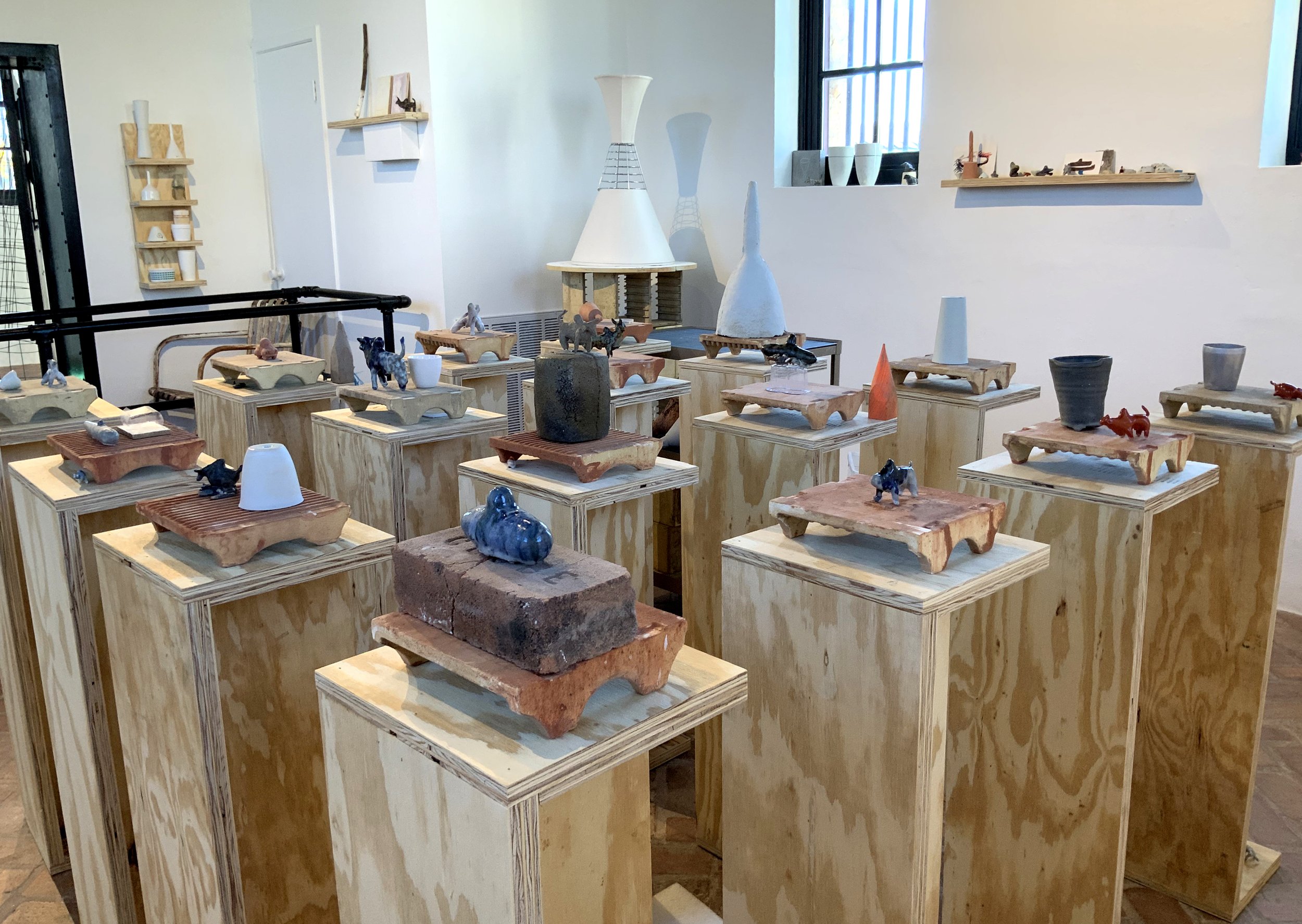
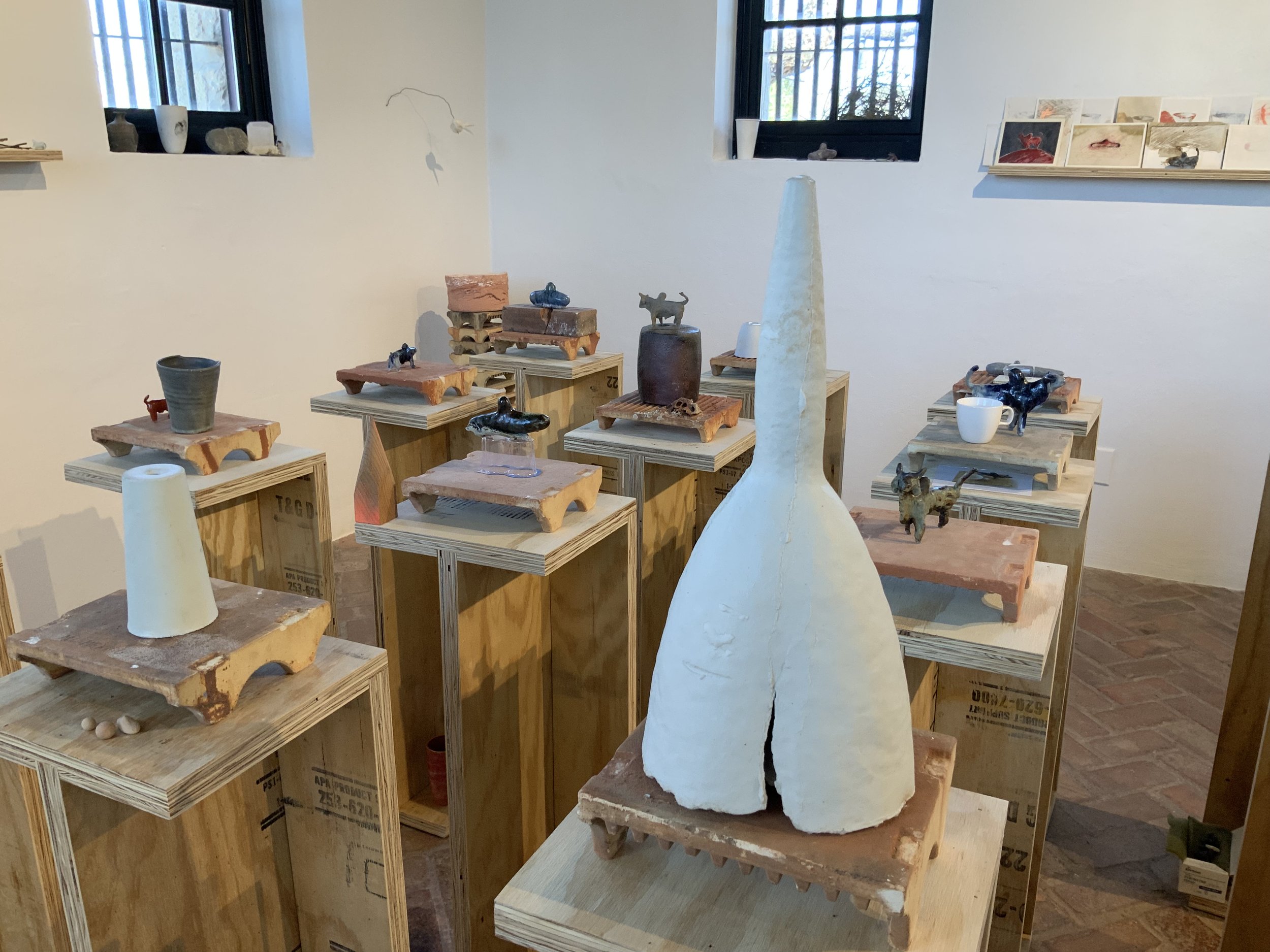
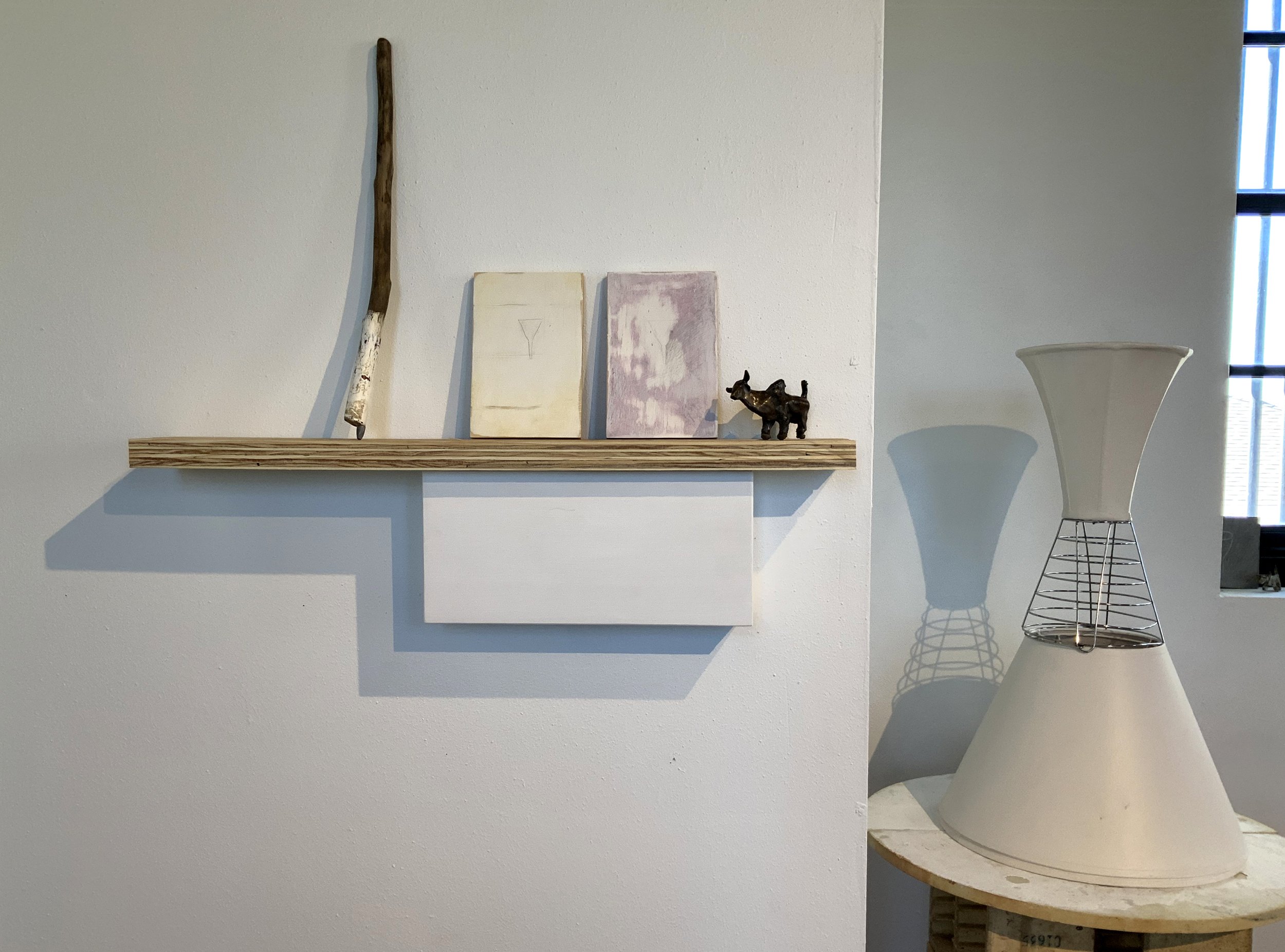
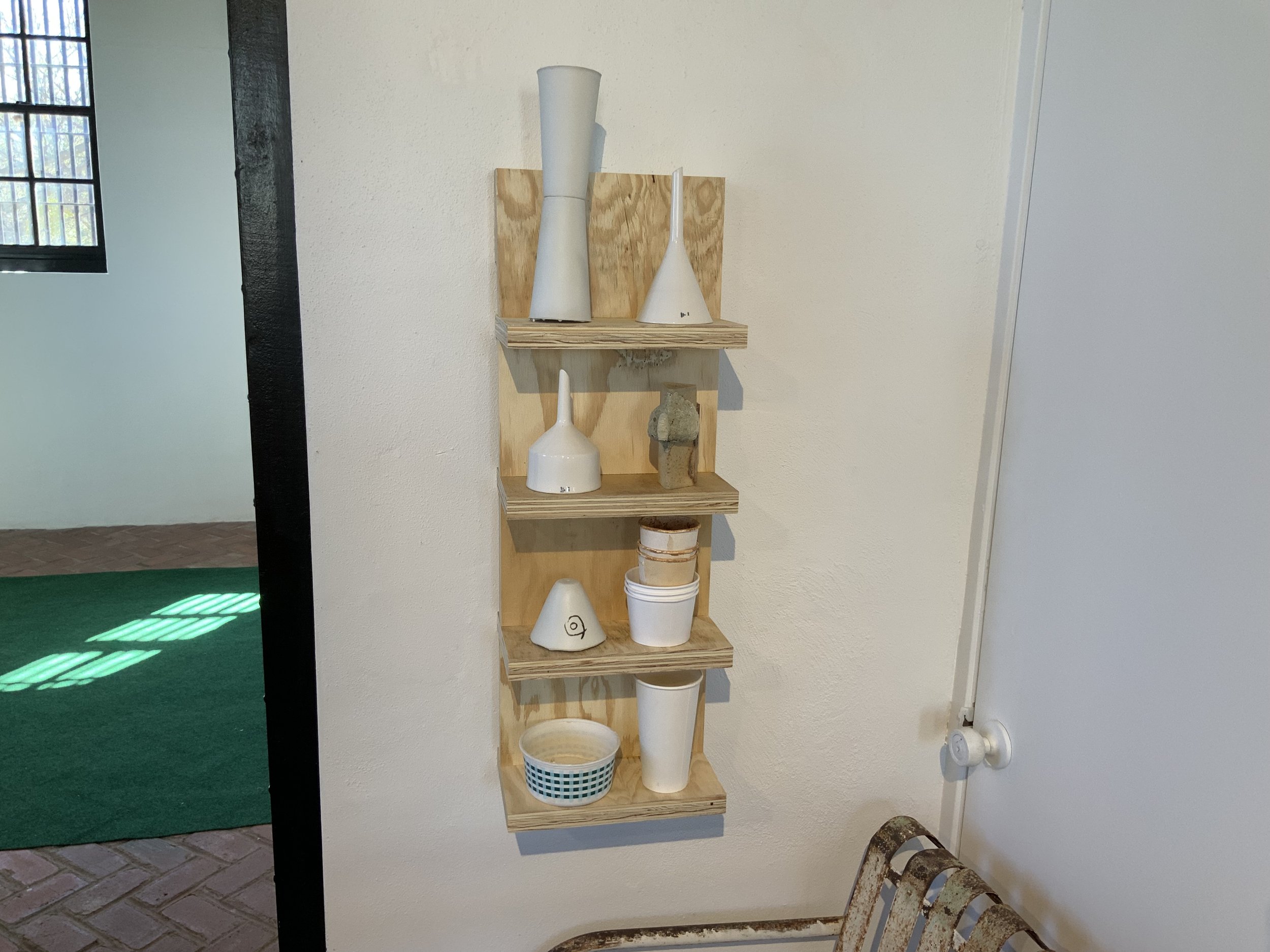
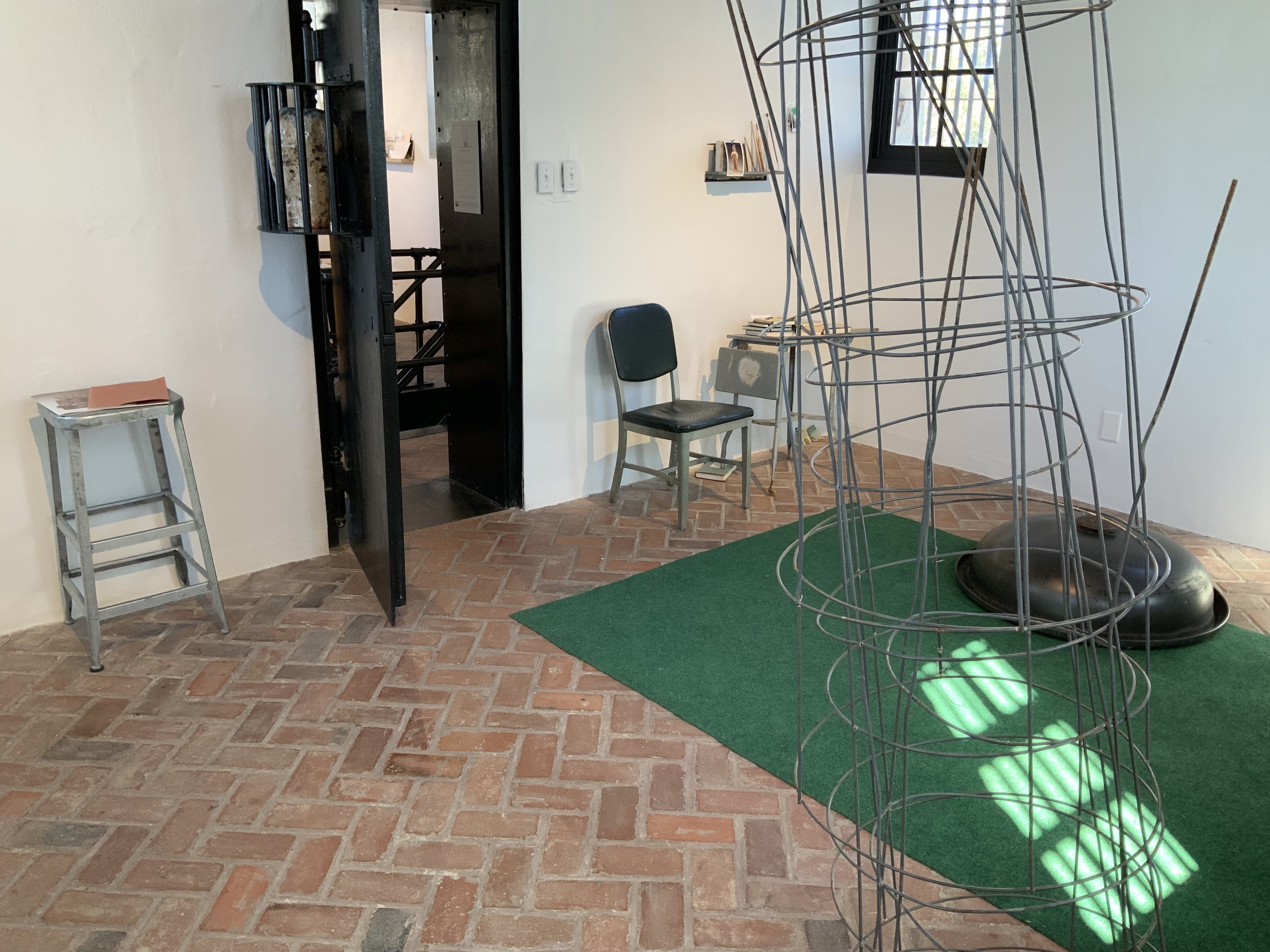
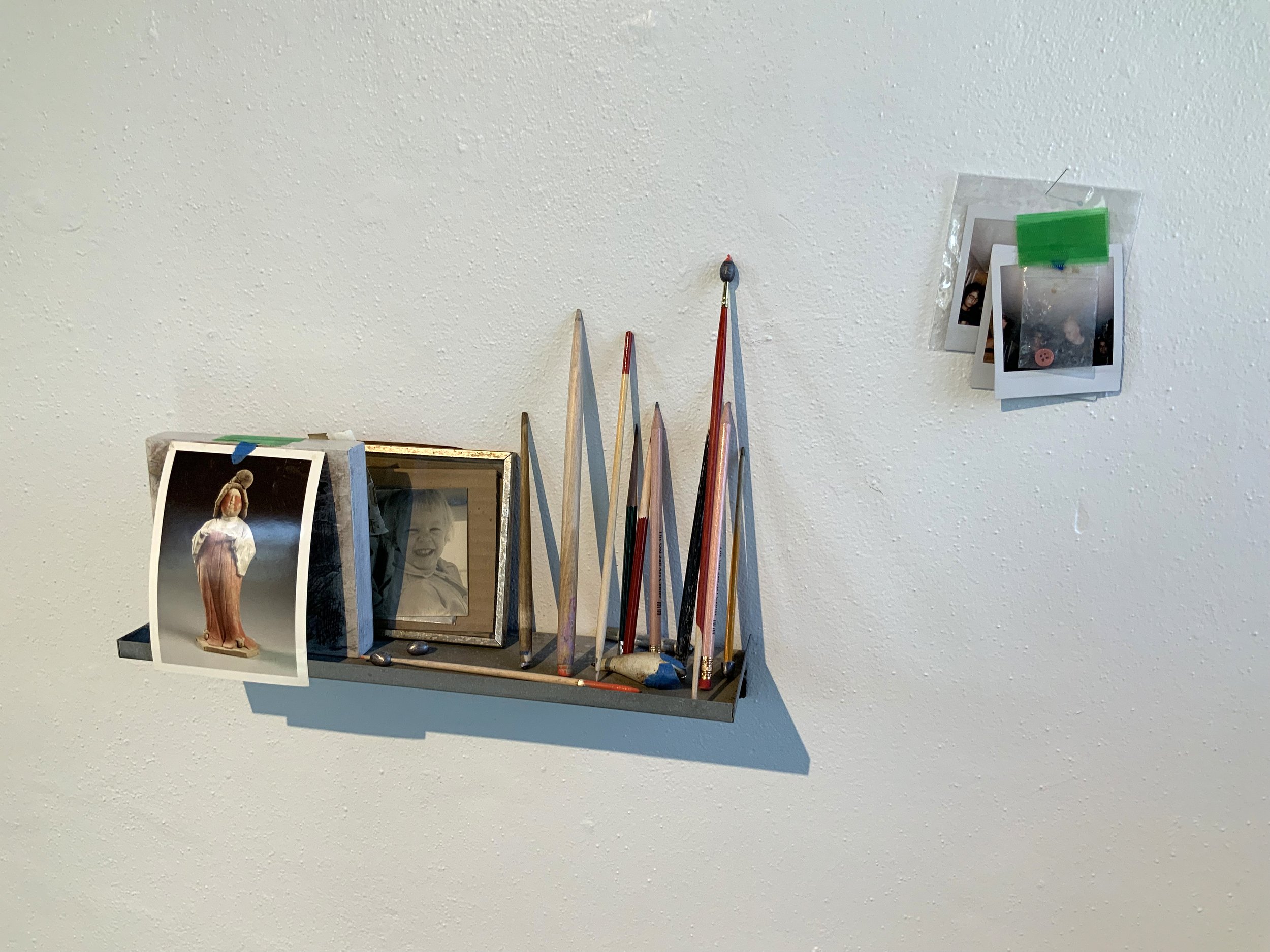
Patrick Kelly, Old Jail Art Center Executive Director and Curator, email interview with artist Chris Powell (August - September 2021)
PK: You exhibited at the OJAC in the 1980s as one of the first in a long line of Texas contemporary artists. Do you remember the exact year and what work or works of yours were exhibited?
CP: Pat, this question doesn’t play to my strengths. Some say I have poor memory, others that I have poor organizational skills. I say I live in the moment. After scouring my memory and an old CV, I found that a piece called Into Our Handsentered the OJAC collection in 1986. Reilly (Nail) would have seen it at Dutch Phillips’ Fort Worth Gallery. The first time to show at the OJAC might have been in 1992 with Cam Schoepp and Kathy Webster. Seems like I showed at OJAC before then, someone knows.
PK: Dates and places escape us all. But, looking back specifically at the work, how has it changed over those 30+ years?
CP: I am drawing much more than ever. I try to draw every day.
While looking for the date of that first show, I found an early artist’s statement that said something like “Powell uses large ceramic objects to compose a space that the viewer must respond to physically as they walk through the space.” I still do that same thing, but now I don’t
have to have a large space to work with and I will use objects other than the ones made from fired clay. Now, the work speaks of the relationship between materials; between shape, form, and surface; between reality and abstraction; between humor and thoughtfulness; and between object and its support.
PK: Let’s dissect these. What type of materials are you utilizing now? Can you give an example of a relationship you recognize between two related or unrelated materials?
CP: I am putting gesso on paper and wood to draw on. I combine found objects with materials like paper, wire, and paint to alter or confuse their history. I put plaster onto found objects and onto structures that I build. Still do a lot of clay.
I am thinking of an installation I did with 4,600 clay balls that lay in a field around a table and a ladder. The clay field seemed to shift in its relationship to the objects, protective at times and confining the next time I saw the installation. The ladder and table sometimes were friendly with each other and sometimes I felt their relationship move in other directions. My work is the most effective when it has multiple interpretations.
PK: Is the humor intentional or unintentional? Is your intent for the humor to be subtle or appear blatant to the viewer? I have an example to share…if you wish.
CP: I never start out to make a humorous piece, but if I sense a piece is going that way I give it full rein. I hope that the humor will manifest itself in different pieces in different ways, some subtle and some apparent. I don’t want a one-liner. What example are you thinking of?
PK: I’m thinking of a work our museum owns that stands by our entrance. It is a tall vertical piece of limestone that has a small white lamb’s head attached to the façade of the stone. I assume it was an intentional inside joke referencing a local and well-known ranch named “Lambshead.” Surely you knew? For those not “in” on the humor, it appears as a handsome and austere piece…for me, I just grin when I pass by it.
CP: Raised on a ranch, I had known of Lambshead from an early age. So, I am glad you mentioned this piece. It is a perfect example of the way I use humor. I was working on a series of small trophy heads— some animal heads you would recognize, some just unidentifiable as any specific animal. I landed on the lamb’s head and it resonated with me. I was in the middle of working out what a trophy with a lamb’s head would look like when I was asked to show at the OJAC. I made the piece with that knowledge of the Lambshead Ranch somewhere deep in my memory. But oddly, I didn’t see the humor until the work was in Albany.
PK: I did not know you grew up on a ranch. That may explain some of your imagery. The Brahman bull is often depicted in your work. Can you tell me why?
CP: This is a good question. We had Hereford bulls covering our crossbred cows. I can remember how comfortable the bulls were around cowboys on horseback, cowdogs, and even cowboys on foot. I would say they were gentle—no, they were calm. Contrast that with our neighbor’s Brahman bulls; they disliked being handled, to say the least. My interest in eastern art, thought, and the east in general, slipped over into my ideas about the image of the bull.
The Brahma is more interesting sculpturally, and I like making them. I have made this image so many times that in some versions it takes the shape of a submarine. A submarine is self-contained. It’s a container, a vessel. The vessel is an important image to me. Some vessels don’t hold their contents but direct the flow; they are funnels.
PK: Well, you touched on another subject matter that sometimes appears in your work—the funnel. Do you want to say more or talk about the first time that object/image appeared in your work?
CP: I am drawn to vessels of all kinds and the funnel especially. Funnels have visual elements that suggest both the male and female. They come in all shapes and sizes and are used everywhere from the farm to industry and from kitchen to the laboratory. I use two different funnels when I change the oil in my pickup. One to put it in, another to take it out.
There was a time, maybe twenty years ago, that I was modeling objects from life. I modeled cups, stoppers, sieves, and tool parts— anything around the studio was fair game. About that time I was asked to do a piece for the Kemper Center for the Arts in Wichita Falls, TX. I included a large funnel that I had found and tethered it to a post by a cable. I also included a large aluminum plate that rested on the ground and tethered another funnel to it. This was one of my first pieces that included an upright element and a horizontal element using found and manipulated objects.
PK: This installation seems to employ all the elements and strategies we have discussed. The then and now are visualized.
The 2022 Cell Series is generously supported by the McGinnis Family Fund of Communities Foundation of Texas, Kathy Webster in memory of Charles H. Webster, and the National Endowment for the Arts, with additional funding from Jay & Barbra Clack, Margaret & Jim Dudley, and Jenny & Rob Dupree.


